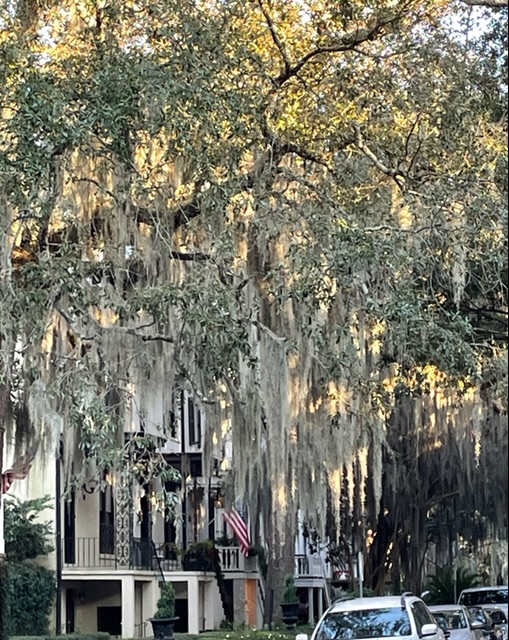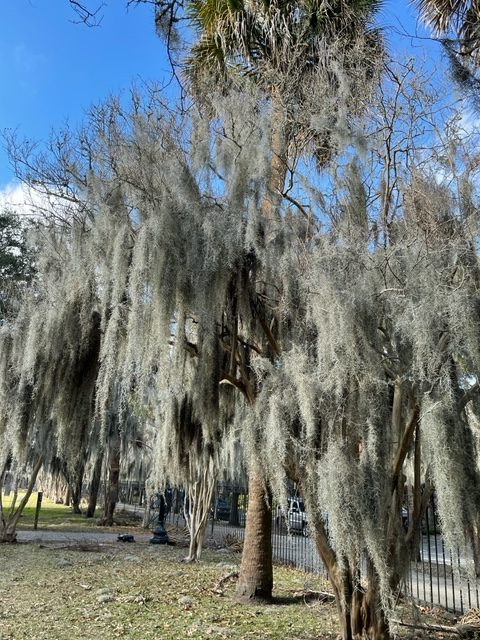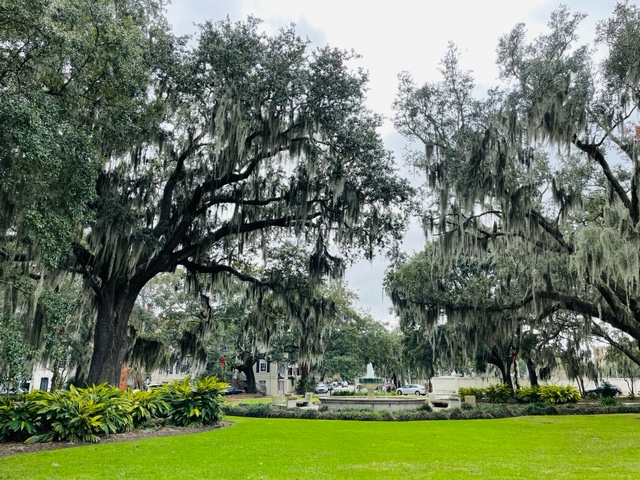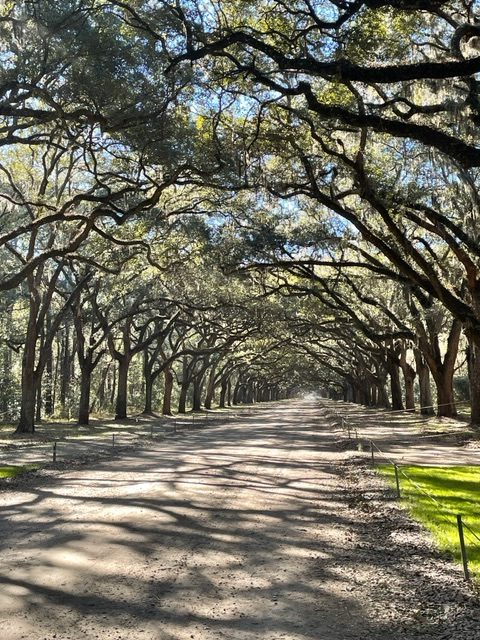One of the attractions in Charleston, South Carolina is an old, oak tree named the Angel Oak Tree. I’m not sure how it got its name…maybe because of its huge canopy of overarching branches offering protection. It is a Southern live oak, which is different than your “ordinary oak” tree.

“The Southern live oak (Quercus virginiana), also known simply as the live oak, gets its name from the fact that, unlike other oaks, it doesn’t lose its leaves in the autumn. Live oaks are native to the Southeastern coast of the United States.”*

We like trees and decided to drive the extra miles out of town, to visit this majestic tree. It did not disappoint. Surprisingly, it is down a rutty, dirt road.

We knew we had arrived when we saw a high, chainlink fence outlining the circumference of the tree, with signs saying this property is protected and patrolled. We noticed the surveillance cameras too. The area is free and open to the public during the day, but closed and gated at night.

This is all good. We contrasted this to the Sycamore Gap tree next to Hadrian’s Wall where we hiked last fall, in England. That sycamore tree stood tall and majestic also, and was 200-300 years old, standing alone in the gap, for anyone to enjoy. A national treasure, for Great Britian. Unfortunately, two weeks after we sat under that beautiful Sycamore tree, vandals came and cut it down! Hopefully that will not happen to the Angel Oak Tree in South Carolina.

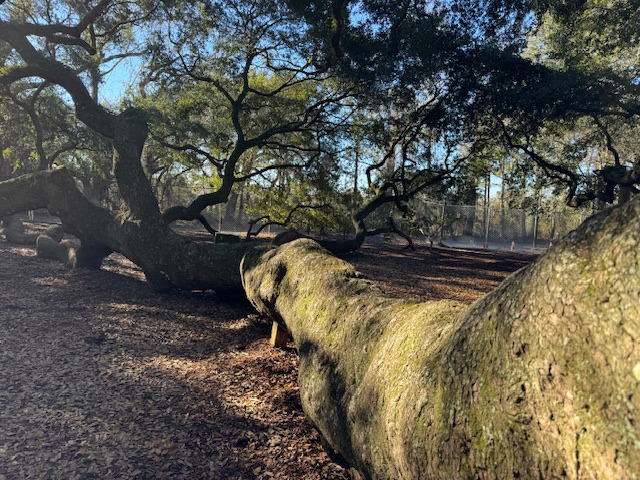
The Angel Oak tree is a national treasure. It is 300-400 years old…some estimate even older. They say the tree is 65 feet high with a trunk circumference of 25.5 feet, shading an area of 17,000 square feet. Of course, I couldn’t capture the whole tree in one photo…but I did take several photos.
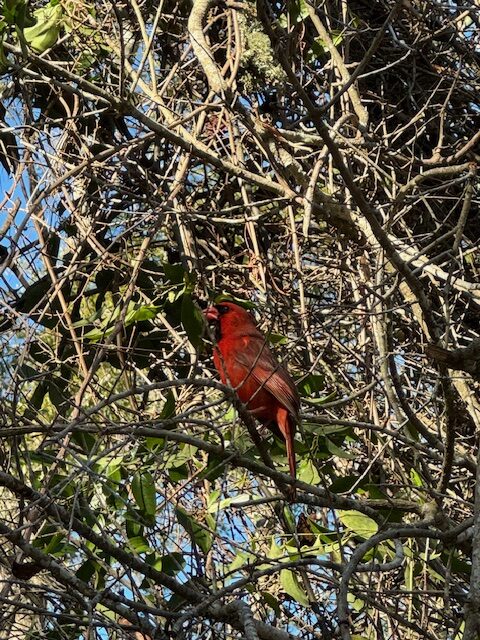
The Angel Oak tree was worth the extra effort to find. A cardinal serenaded us from a different tree, but he added extra joy to our experience. A new baby tree has been sprouted from an acorn from the Angel Oak tree. It is three years old and grows in a pot next to the trunk, under the protecting branches of its mama.
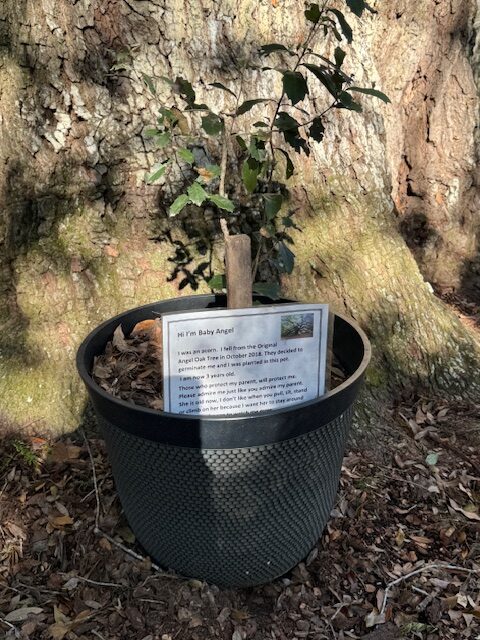
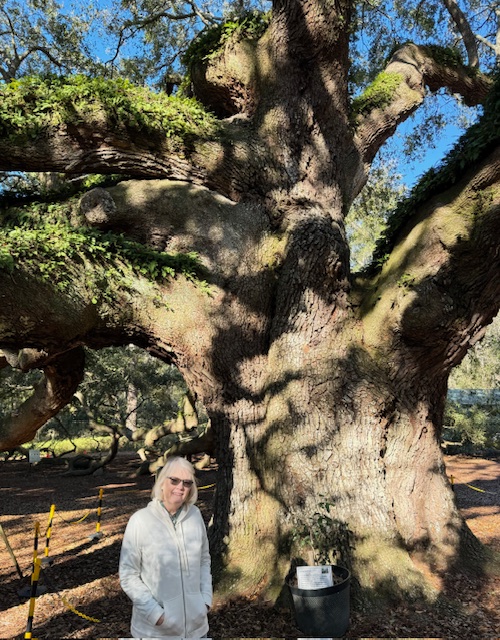
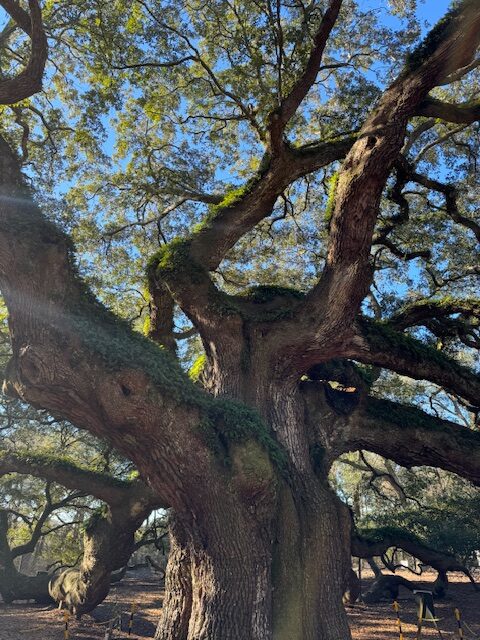
Think of all this tree has lived through. Ah, the stories it could tell.
*Wikipedia
